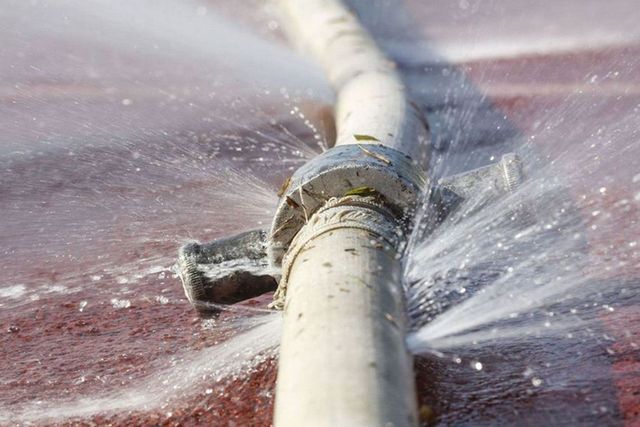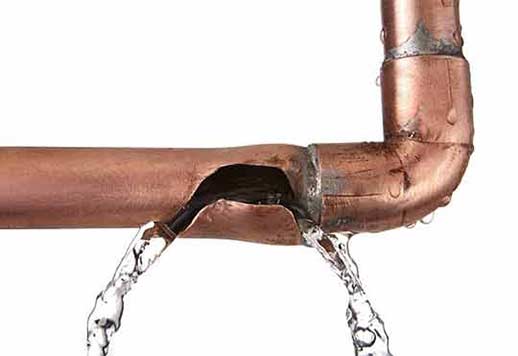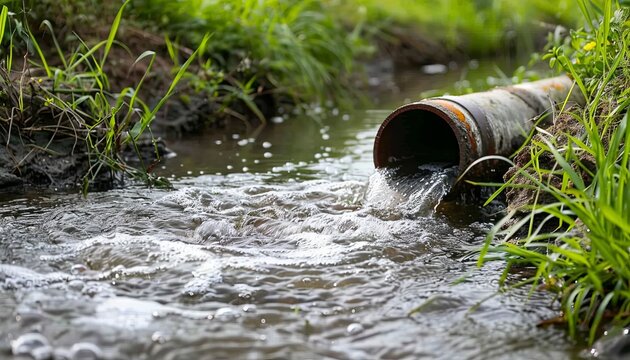How to Handle a Burst Pipe: Essential Steps for Immediate Action
How to Handle a Burst Pipe: Essential Steps for Immediate Action
Blog Article
Stopping Ruptured Pipeline: Necessary Tips to Secure Your Pipes
Avoiding burst pipes is a vital worry for homeowners, particularly throughout chillier months when the danger of freezing is enhanced. Applying tactical steps such as proper insulation, regular inspections, and preserving consistent indoor temperature levels can dramatically lower the probability of pipe failing. Furthermore, understanding emergency treatments equips homeowners to react promptly to prospective plumbing issues. Numerous are uninformed of the certain susceptabilities that their pipelines may face. Exploring these vulnerabilities can provide important insights right into guarding your plumbing system effectively.
Understand Pipeline Vulnerabilities
Understanding pipe susceptabilities is vital for reliable pipes maintenance and preventing expensive damages. A number of elements add to the vulnerability of pipelines to bursts, including material make-up, age, and ecological problems. Older pipes, specifically those made from galvanized steel or polybutylene, typically degrade with time, bring about boosted risk of leaks and tears.
Temperature level fluctuations can additionally substantially effect pipe integrity. In chillier environments, water trapped in pipelines can freeze, applying and broadening stress on the pipeline walls, which may ultimately lead to a ruptured. In addition, high water stress can strain pipes, especially at joints and bends, increasing the possibility of failing.

Insulate Piping Correctly
Appropriate insulation of pipes is critical for protecting against cold and subsequent bursts during winter (burst pipe). Insulating your plumbing system efficiently safeguards against temperature goes down that can cause costly damage. Begin by recognizing prone areas where pipelines are subjected to exterior temperatures, such as basements, attics, and outside wall surfaces
Use foam pipeline insulation sleeves or wrap insulation tape around these areas to provide a protective barrier. Ensure that all sections of the pipes, especially those with restricted warm direct exposure, receive adequate insulation. Pay special focus to fittings and joints, as these are a lot more at risk to cold.
When insulating, it's necessary to choose products that satisfy neighborhood structure codes and are ideal for the specific environment. For example, fiberglass insulation is commonly recommended for its thermal resistance buildings - burst pipe. Additionally, consider utilizing heat cables or tape in extreme conditions, which can be plugged in to offer additional warmth
On a regular basis check shielded pipes for any indicators of wear or damage, as endangered insulation can reduce its effectiveness. By taking these proactive procedures, you considerably lower the risk of pipeline bursts, ensuring a reputable pipes system throughout the cold weather.
Maintain Consistent Temperature Level
A secure indoor temperature is important for preventing burst pipelines throughout the cold months. When temperature levels decrease, water within pipes can freeze, developing and broadening pressure that may eventually create the pipelines to ruptured.Making use of a programmable thermostat can aid take care of interior temperatures efficiently, making certain that areas with plumbing continue to be warm even when the residence is empty.
This small circulation of water can avoid freezing by easing pressure within the pipelines. By executing these strategies, home owners can substantially minimize the risk of pipeline bursts and protect their pipes systems versus the rough winter season components.
On A Regular Basis Evaluate Pipes
Routine inspections of pipes systems are important for protecting against click this link ruptured pipes and maintaining total home integrity. Routine checks permit home owners to identify potential issues prior to they escalate into expensive repair work or major water damages. During these assessments, it is vital to take a look at noticeable pipelines for signs of rust, leakages, or wear. Pay special interest to areas prone to cold, such as cellars, attic rooms, and exterior walls.
Additionally, checking connections and joints is vital, as these points are commonly prone to leaks. House owners ought to also analyze water stress levels, as extreme stress can stress the plumbing system and raise the threat of pipeline bursts.
Take into consideration scheduling expert plumbing assessments at the very least yearly, particularly before wintertime, to ensure your system is gotten ready for colder temperature levels. Routine inspections not just help in recognizing immediate issues but additionally foster long-term maintenance methods that can enhance the life-span of your plumbing system. By being positive in your approach, you can protect your home against the turbulent and expensive repercussions of ruptured pipes. Focusing on plumbing examinations is an investment in your home's wellness and safety.
Know Emergency Situation Procedures
Understanding emergency treatments is crucial for every single home owner, particularly after performing regular pipes inspections. Being prepared for a pipes emergency can substantially reduce damages and save expenses. Locate your main water shut-off valve; it is generally found near the water meter or where the major line enters your home. Familiarize yourself with its procedure, as shutting off the water supply rapidly can avoid extensive flooding.
Following, keep vital devices convenient. A plumbing emergency situation set ought to include a wrench, plunger, and towels, along with a flashlight Website and a container for tiny leakages. Furthermore, take into consideration having the get in touch with info for a trusted plumber easily offered, should the circumstance rise beyond your control.
If you spot a leak or burst pipeline, instantly transform off the supply of water and alert your plumbing professional. Additionally, record the damage with pictures for insurance policy functions. burst pipe. Know the indicators of possible plumbing issues, such as unusual water stress variations or damp places on wall surfaces
Eventually, positive expertise and speedy action are critical in managing plumbing emergencies, ensuring your home remains protected and minimizing possible damages.

Verdict
Finally, protecting against ruptured pipelines demands a diverse approach that consists of understanding pipeline susceptabilities, appropriate insulation, keeping constant interior temperature levels, normal assessments, and understanding of emergency treatments. By carrying out these vital strategies, the danger of plumbing failings can be dramatically minimized, official site thus making certain the long life and performance of the pipes system. Positive measures not only guard against possible damages yet likewise contribute to general water conservation and the defense of building.
In colder climates, water trapped in pipes can freeze, exerting and broadening stress on the pipeline walls, which may inevitably lead to a ruptured. When temperatures decline, water within pipelines can freeze, expanding and developing stress that might ultimately cause the pipes to ruptured. By applying these techniques, house owners can considerably lower the risk of pipeline bursts and protect their plumbing systems versus the severe winter aspects.

Report this page